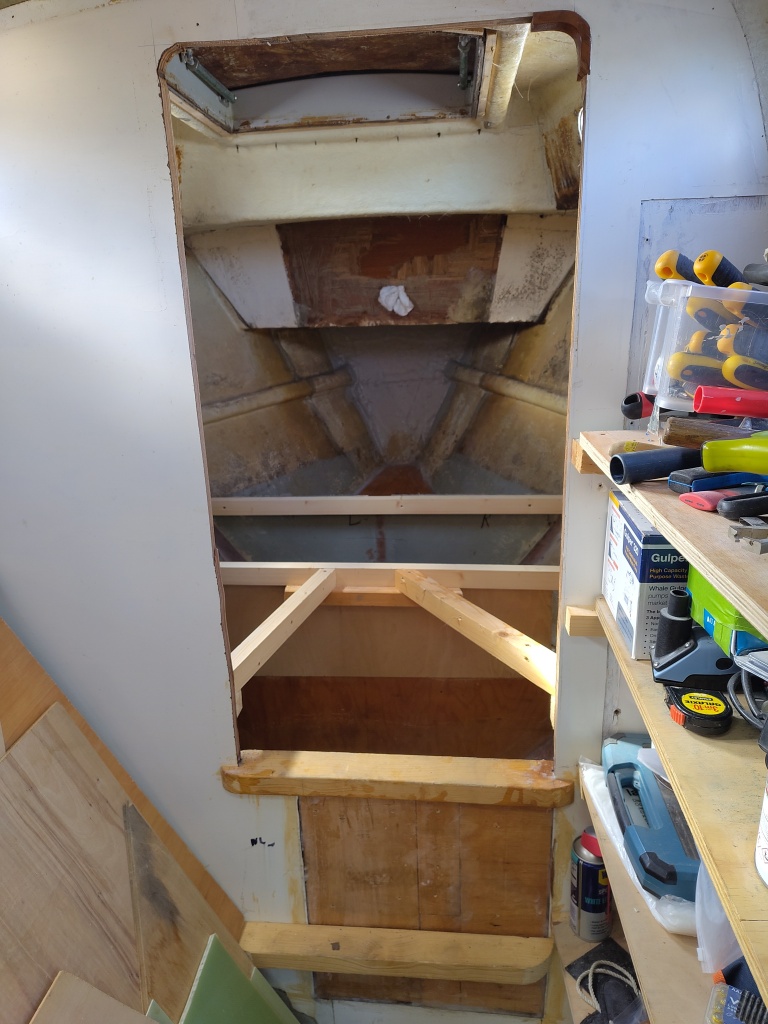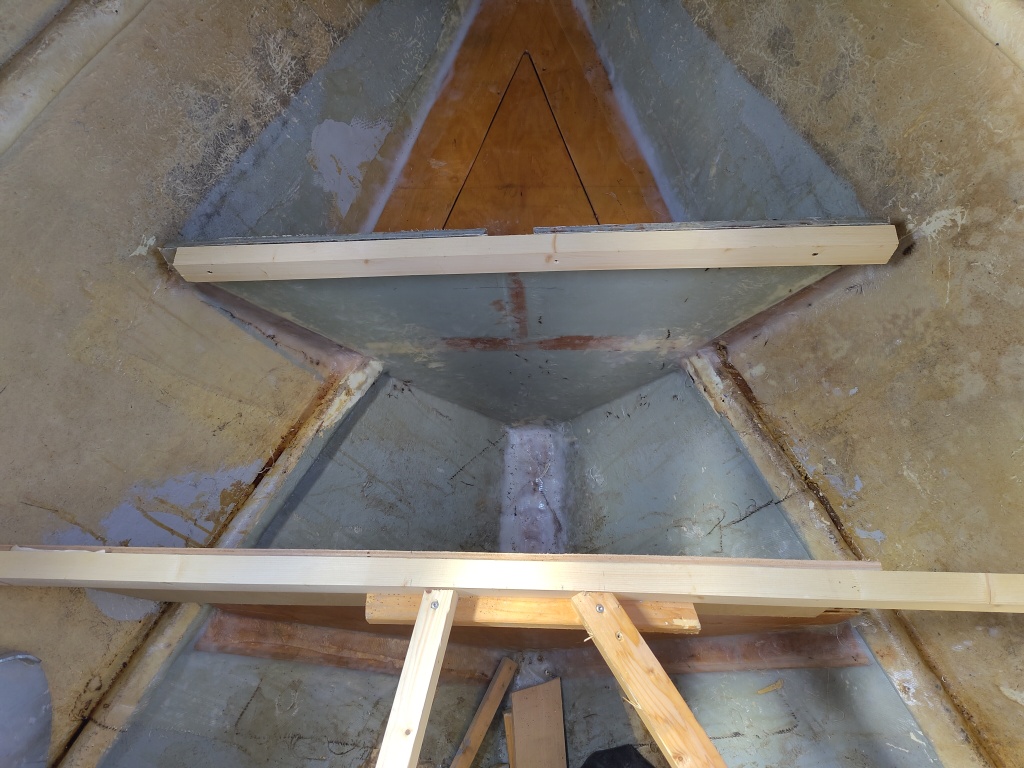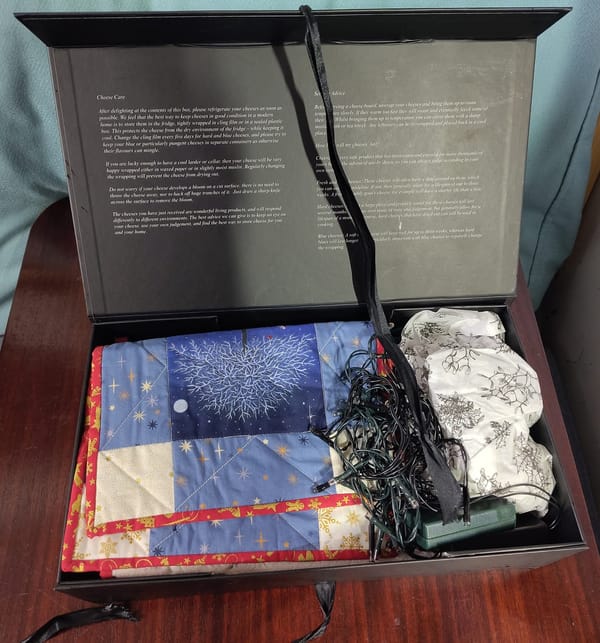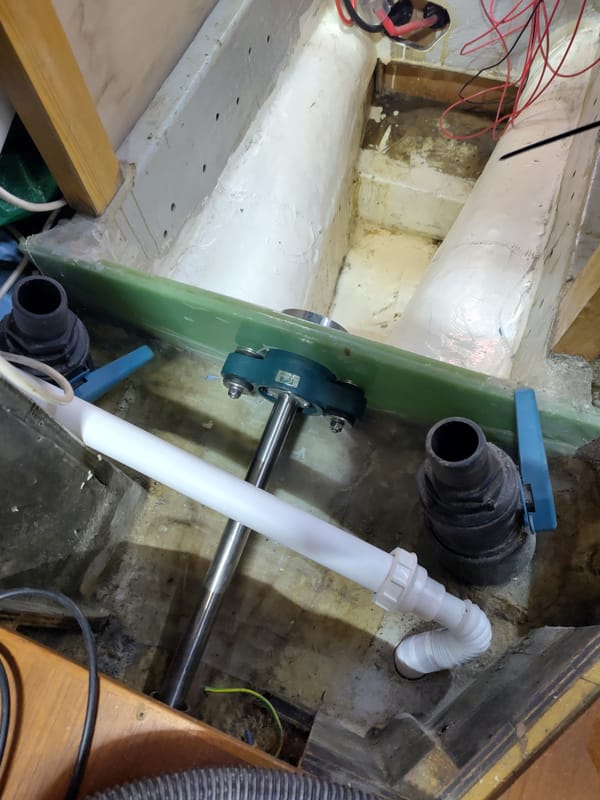Composting and our forecabin layout
In Our Compost Toilet deadline we said we that our current plan is to create a place for composting the septage (the dry solids from our Nature's Head compost toilet). To achieve the temperatures to rapidly kill all pathogens three things are needed:
- Insulation (in a large outdoor composting bin this comes from the cover material [eg straw] that surrounds the material being composted).
- Oxygen for the microbes to consume
- Water. The compost needs to have a moisture level of approximately 70%
We need to insulate the space where are composting because our volumes are small (the key reason for using a dry compost toilet is that we end up with much less material to compost as we have not got all the urine and extra cover material needed to avoid smells when urine and poop are mixed). With small volumes the composting process won't heat up as much so we need to trap all the heat we can.
We are going to have fan assisted ventilation (with variable control) to ensure enough oxygen is available.
We will monitor moisture levels and add more water (and potentially urine) as needed to keep the moisture levels correct.
As we will be adding extra toilet solids every month or so we are thinking of keeping them fairly separate from each other rather than mix into a single mass. This way, once the space gets full we can remove the oldest (and most composted) deposit that we will have monitored so we know they will be pathogen free. We have also discovered that the compost can be tested using Radish seeds. If you plant radishes into the compost and 75% grow then the compost is safe.
As boats are not neat box shapes we think we will create bags for each deposit. The bags will have a waterproof base (to keep the moisture in) and mesh sides (to let the oxygen in). We are going to find some way to ensure air gaps between the bags so that oxygen can get everywhere.
We have already created multiple watertight compartments in the forecabin and we are going to use one of these for the composting bin. We should be able to fit at least 6 bags of toilet septage in. That means we should be able to compost the material for at least 6 months with the aim of doing so at temperatures that ensure pathogens are killed far more quickly than that.
Until we get started we don't know what temperatures we will be able to achieve. There are variables we will be able to adjust and we will use Raspberry Pi Pico to monitor the impact of adjusting the airflow, moisture content (and type), the amount of extra material (more coconut coir and/or kitchen scraps).
At the end of the day, if we have been composting the septage for 6 months, even at low temperatures, it will definitely be in much better condition to dispose of with fewer risks and costs to others. As it shrinks during the composting process we would not be surprised if we are able to use the space to keep the compost to much more than 6 months anyway.
So here are some pictures of our (not yet finished) forecabin to see where the composting will happen.

Looking through the forward heads into the forecabin. The step through the doorway is a watertight bulkhead. The shelving on the starboard side is temporary. At sea, the doorway will normally be closed off with watertight sealed door so that the whole forecabin will be a watertight compartment.
Across the first section of the forecabin are two temporary diagonals marking where the bunks will be.
The bottom of that first section of the cabin is where our anchor chain will be stored with a floor above it. You will be able to "crawl" into the cabin and sit on the bunk with your feel resting on the floor above the chain.
A sloping hause pipe will come down from the white cloth to the forward bulkhead of the chain locker (when you are in one of the berths your legs go under the hause pipe). We are not expecting to use the berths very often and then mostly if we have a family with children joining us for coastal cruising :-)
At the very forward end of the forecabin is our new crash bulkhead with closed cell foam forward of it (we moved this forward so that the berths could be longer and so that the chain wouldn't drop behind it so we could seal it off permanently).

Here, looking down, we can see the compartment (with watertight coffer bulkheads) that we can use for the composting. There is another storage area forward of it with a watertight crash compartment at the bottom of it.
Once all the grp tabbing and grp skins on the bulkheads are complete we will line the whole compartment with 5mm sticky backed foam insulation. Then 40mm of xps foam on all 4 sides. We will add an additional 40mm xps foam to the full sides to give a smooth cover for the stringer.
Then the whole compartment will be lined with fiberglass cloth (covered with a gelcoat paint) to ensure that when we empty all the compost out there will be no leaks into the insulation and it can all be wiped clean.
We will create an insulated lid for the compartment that will be fastened down (we don't want septage all over the boat if we are knocked down).
The ventilation will be a plastic tube running along the underside of the hause pipe into what was the deck anchor locker (our anchor lives on the beefed up bow roller and the windlass is now at deck level). The fan will push air our through this tube.
No doubt there will be some changes, but this is the direction we are heading in.




